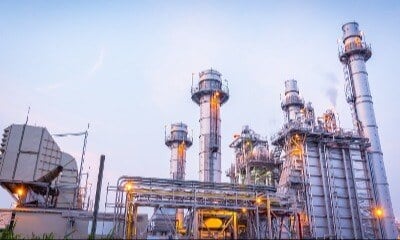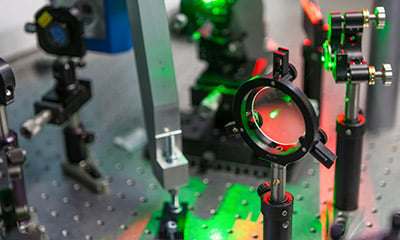Revolutionizing Agriculture: The Sustainable Approach of Laser Weeding and Pesticide Elimination
By Seminex

Among these innovations, laser weeding has emerged as a groundbreaking technology that not only eliminates the need for harmful pesticides but also offers substantial cost savings to farmers.
The Environmental Impact
Traditional farming methods often rely heavily on the use of pesticides to combat weeds, leading to adverse effects on the environment. Pesticide runoff can contaminate water sources, harm beneficial insects, and pose risks to human health. Laser weeding presents a compelling solution by completely eliminating the need for these harmful chemicals. The environmental impact is substantial, contributing to the preservation of biodiversity, soil health, and water quality.
Weed Control with Precision
Laser weeding operates on the principle of selective photothermolysis, a process that targets specific plant tissues with high precision. The integration of AI into laser weeding systems enhances precision by analyzing and processing data in real-time. AI algorithms can identify and differentiate between crops and weeds, ensuring that the laser targets only the unwanted vegetation. This level of precision minimizes the risk of collateral damage to crops, making laser weeding a highly efficient and targeted solution.
Water-Absorption is Key
The 1470nm wavelength has proven to be a game-changer in laser weeding technology. This laser operates at a wavelength that is highly absorbed by water, making it ideal for precise and efficient weed removal. As the laser beam interacts with water within the plant cells, it generates heat, leading to the vaporization of the targeted weeds. The 1470 laser's ability to penetrate plant tissues with high water content ensures that the energy is selectively absorbed by the weeds, leaving the surrounding crops unharmed.
Optimizing Weed Control
The 1940 wavelength operates at a slightly longer wavelength, offering additional flexibility in weed control. The longer wavelength allows for deeper penetration into plant tissues, making it effective for targeting larger and more established weeds. Together, the 1470 and 1940 lasers provide a comprehensive solution for diverse weed populations, ensuring thorough and precise control.
Cost Savings for Farmers
One of the most compelling advantages of laser weeding is the significant cost savings it offers to farmers. Traditional weed control methods involve the purchase and application of herbicides, which can be expensive and contribute to recurring operational costs. Laser weeding eliminates the need for these chemical inputs, reducing the overall expenditure on pesticides. Additionally, the precision of laser weeding minimizes the risk of collateral damage to crops, further enhancing cost-effectiveness.
Reduced Labor Intensity
Beyond cost savings, laser weeding also addresses the labor-intensive nature of traditional weed control methods. Manual weeding or the application of herbicides requires significant manpower, contributing to labor costs and potential health risks for farmworkers. Laser weeding, being an automated and precise process, reduces the reliance on manual labor, allowing farmers to reallocate resources to more strategic aspects of farm management.
Positive Results in Field Trials
The efficacy of laser weeding using lasers has been demonstrated in numerous field trials, showcasing positive results in weed control. These trials have highlighted the technology's ability to selectively target and eliminate various weed species while preserving the health and productivity of crops. The adaptability of the 1470nm and 1940nm lasers to different crop types further underscores their versatility and effectiveness in diverse agricultural settings.
Challenges and Considerations
While laser weeding presents a promising solution, it is essential to acknowledge certain challenges and considerations. Factors such as weather conditions, soil type, and the need for proper calibration of laser systems require careful attention. Additionally, the initial investment in laser weeding technology may pose a barrier for some farmers. However, the long-term benefits in terms of reduced pesticide costs, labor savings, and environmental stewardship outweigh these initial challenges.
SemiNex’s Laser Advantages
- Lower cost ($/w) per watt
- Higher output powers in same package as single junction
- High reliability across a wide thermal spec
- Custom laser packages available
- High volume supplier based in the US
Conclusion
In conclusion, laser weeding, particularly with the use of 1470nm and 1940nm lasers, represents a revolutionary approach to sustainable agriculture. By eliminating the need for pesticides, reducing environmental impact, and offering substantial cost savings to farmers, this technology holds immense potential for transforming the way we cultivate our crops. The positive results observed in field trials underscore the practicality and effectiveness of laser weeding in diverse agricultural scenarios. As we continue to embrace innovative solutions for a more sustainable future, laser weeding offers promise for a greener and healthier agricultural landscape.
By Seminex
Related articles
Featured, Datacom, New applications, Artificial Intelligence
The Data Center Footprint is Unsustainable
The Data Center Footprint is Unsustainable
Featured, New applications
Demand for Indium Phosphide Chips Driven by Communications and Consumer Electronics Applications
Indium phosphide (InP) has emerged as a critical semiconductor material, ...



.jpg)
.jpg)
.jpg)
.jpg)


.jpg)
.jpg)


